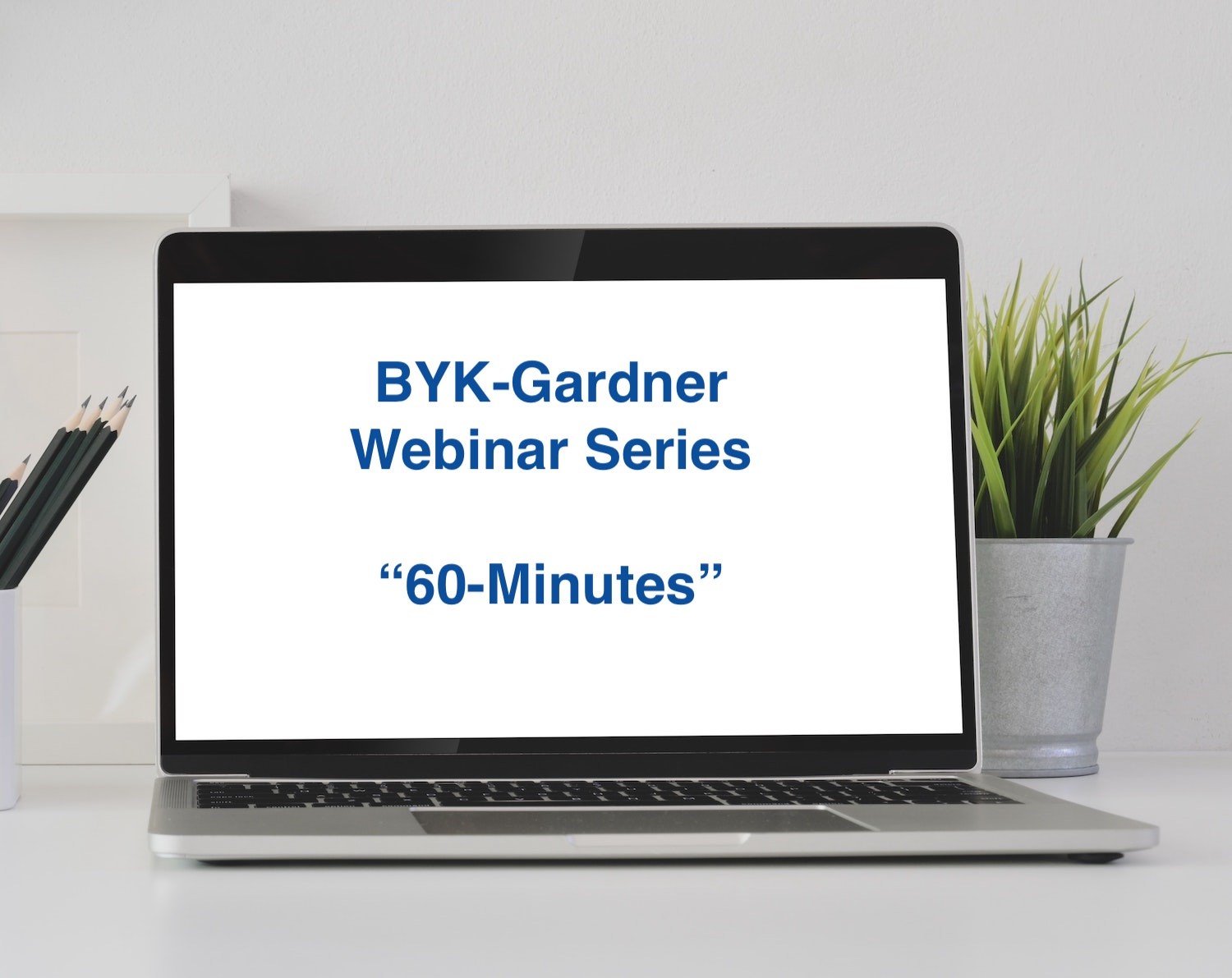
Every month, BYK-Gardner holds free on-line seminars to keep you updated on subjects including colour and gloss measurement and how to test physical properties of paint and coatings.
Here are the forthcoming 2020 dates and topics, plus the links for registration – we’ll highlight each at the start of the relevant month:
April 22nd at 2pm (GMT): Hardness and flexibility of coatings
Hardness is the resistance of a coating to a mechanical force, such as pressure, rubbing or scratching. Coatings need a mixture of hardness and flexibility. This webinar considers various test methods to determine the hardness and flexibility of coatings and includes practical examples. Register here
May 13th at 2pm (GMT): NEW wave scan generation
The new wave-scan generation comes with a fresh design and large colour touch display. The operation and feel are just as intuitive as using a smart phone. In this webinar, new and current appearance scales used by different automotive OEMs will be discussed and analysed with new QC functions in smart-chart. Register here
June 17th at 2pm (GMT): Colour control and NEW prediction of colour stability
The spectro2guide spectrophotometer represents the next step in the evolution of colour measurement. Like its predecessor, colour and 60° gloss are measured simultaneously. What is completely new is the quantification of fluorescence by measuring like a fluorimeter! The combination of a spectrophotometer with a fluorimeter opens up new perspectives to control colour quality and guarantee colour stability over years. It provides objective measurement results now and in the future. Register here
July 15th at 2pm (GMT): Measuring film thickness of coatings
Controlling film thickness helps save material costs and ensures that colour, appearance and physical properties of your application are maintained. The adhesive strength of a coating is particularly important for mechanical behaviour as well as for corrosion protection. Find out more at the webinar. Register here
August 19th at 2pm (GMT): Basic Building Blocks of colour
Visual colour perception is influenced by our individual colour preferences which depend on our personal experience and memory. Therefore, standardisation of light source and observer are essential for objective colour control. CIE standardised light source and observer guarantee an objective description of coloured objects. Only the use of standardised colour instruments with internationally specified colour systems can solve the shortcomings of visual perception. Register here
September 16th at 2pm (GMT): Get a clear view
The appearance of a transparent product is defined by its application. For excellent readability, phone cover glass has to be crystal clear. Packaging film used in the food industry should be very clear and transparent, while film for grocery bags should be translucent and diffuse light. Register here
October 7th at 2pm (GMT): Viscosity basics
Viscosity plays a crucial role in the production and processing of fluids. The viscosity of paints and varnishes under certain shearing conditions usually has a direct bearing on storage stability, processing and flow. Objective and reliable measurements with defined limits are therefore the prerequisite for a stable process with uniform quality. Register here
November 11th at 2pm (GMT): Colour systems for solid and effect colours
Colour difference equations for solid and effect colours - which method is the best? This is a loaded question with more than one answer! Colour control has historically been done by visually inspecting samples and comparing them to a standard. This has the disadvantage of being subjective. For more objectivity, the internationally agreed CIELAB system has been used since 1976. Meanwhile, several modifications of the CIELAB colour equation like DE2000 were introduced for solid colours. For effect colours, the development goes one step further with the introduction of the DE DIN6175. The goal of all modifications was to improve the correlation between visual perception and instrumentally measured values. Register here
December 2nd at 2pm (GMT): Effect colours - What do you see and how does it match your colour results?
What do we really see? Visual outdoor colour perception is influenced by varying environmental conditions. It is known that the sun position is dependent on geographical location and varies from day to day and season to season. In addition, the size of an observer, the distance to a vehicle and the mounting position of add-on parts influence the viewing angle. Many parameters need to be specified when comparing to instrumental results. Register here